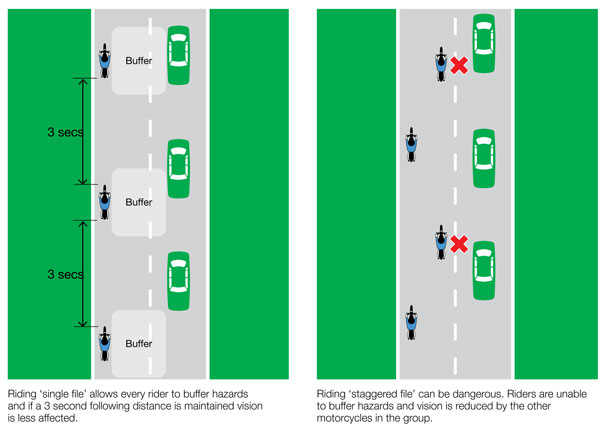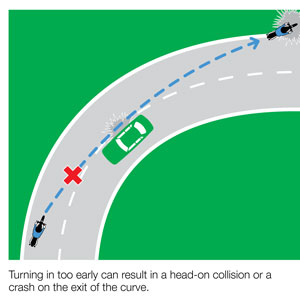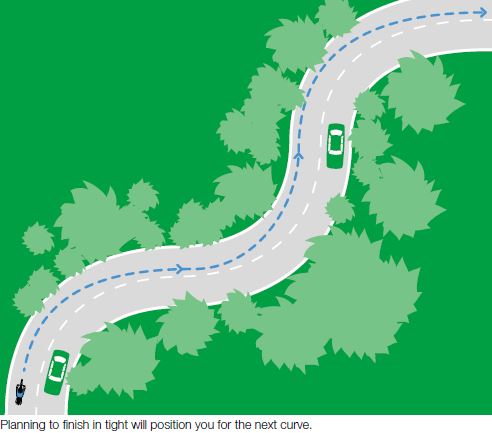The Rider's Handbook
Road positioning (continued)

Multi-laned roads
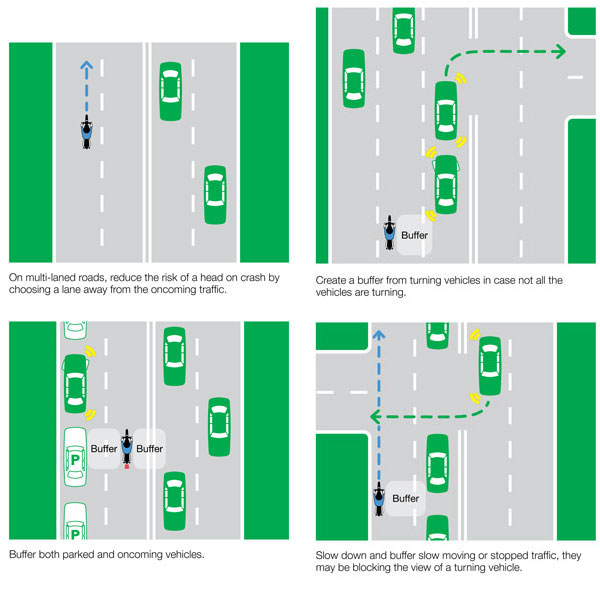
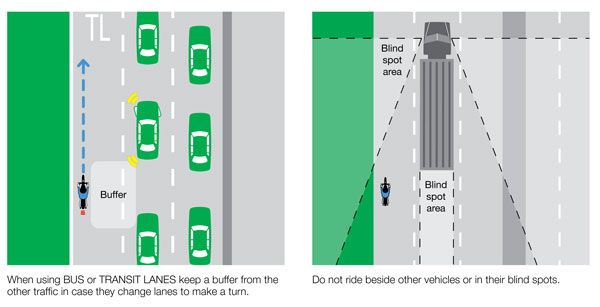
Overtaking
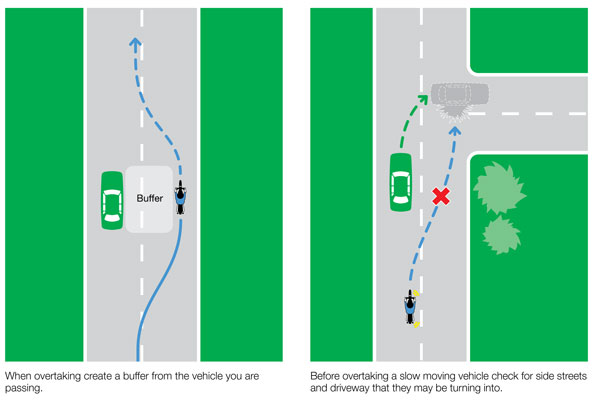
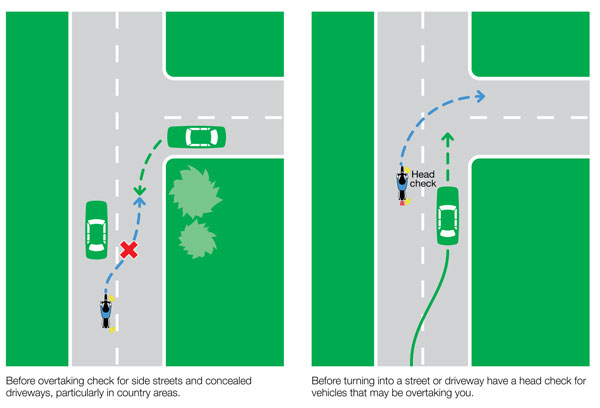
Turns at intersections
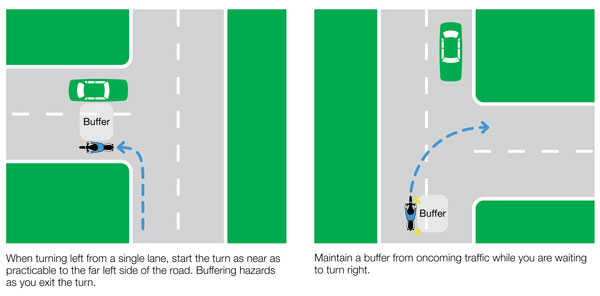
When turning left or right you must give way to any pedestrians crossing the road into which you are turning.
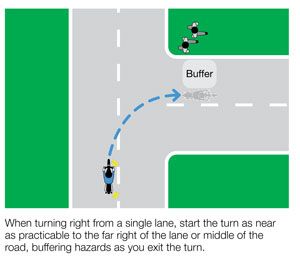
Position yourself to be visible
Motorcyclists often experience near hits or collisions with cars. Usually the car driver apologises and says, “sorry mate I didn’t see you”. Motorcycles are relatively small objects on the road, and it’s not always easy for car drivers to see them. As a result it is important to get into a position on the road that will give other road users the best chance of seeing you and thereby avoiding a crash.
While you may be able to clearly see a car ahead, the driver may not see you, or can only see a small portion of you, due to:
- a lack of attention
- obstacles such as parked cars, stobie poles, signs, wheelie bins or vegetation
- equipment in the car such as GPS devices, mobile phone holders and the pillars between windows.
Think about whether a driver can see you and adjust your road position to maximise your visibility. If you are following or alongside a vehicle, make sure you can be seen by the driver in their rear vision and side mirrors.
You have a better chance of being seen by other road users if you wear brightly-coloured protective clothing and helmet.
Don't rely on other road users to look out for you; and don't assume they will see you even if you are wearing high visibility clothing.
Positioning for curves and bends
- Plan to start curves and bends wide (for maximum vision).
- Plan to finish them in tight (to get your speed right and leave room for errors).
- Keep away from the head-on zone (where on-coming vehicles are most likely to cross the centre line).
Taking curves and bends this way will slow you down a little on the approach but will allow you to accelerate out much earlier, when you have a clear view.
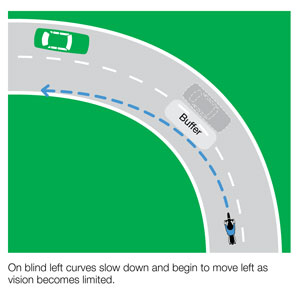
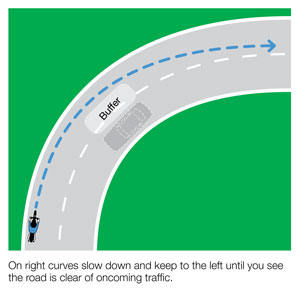
Make sure braking is done before negotiating the bend so that the motorcycle is under control, particularly during inclement weather.
The danger of exiting wide
Many riders try to straighten out of turns too quickly, resulting in the motorcycle running too wide on the exit. This is dangerous as it allows no room for error: if the curve tightens up or changes direction, the rider needs to work harder to complete the turn. Furthermore, it greatly increases the risk of a head-on collision on right curves.
When a rider exits a curve wide there is no room for error.
Many crashes happen because riders run wide on the exit of a turn.
Planning a series of curves
Link a series of curves together by starting each curve wide and planning to finish it in tight. A tight exit puts you in the right position to enter the next curve
Remember to create a buffer when you see an oncoming vehicle.
Riding in groups
